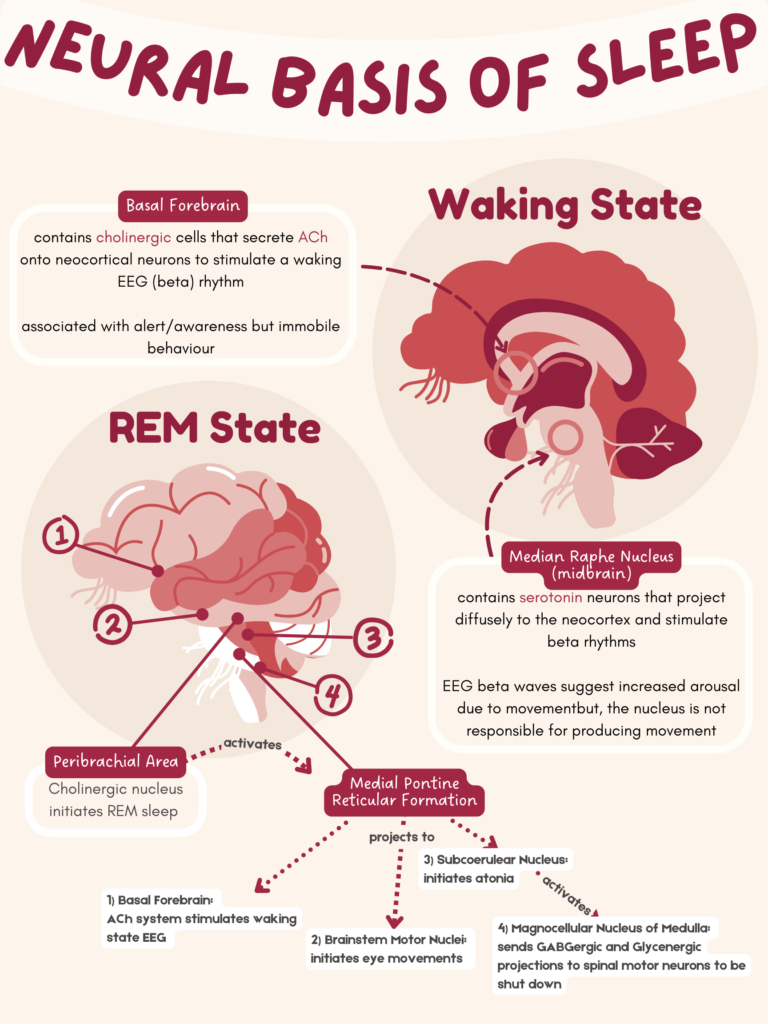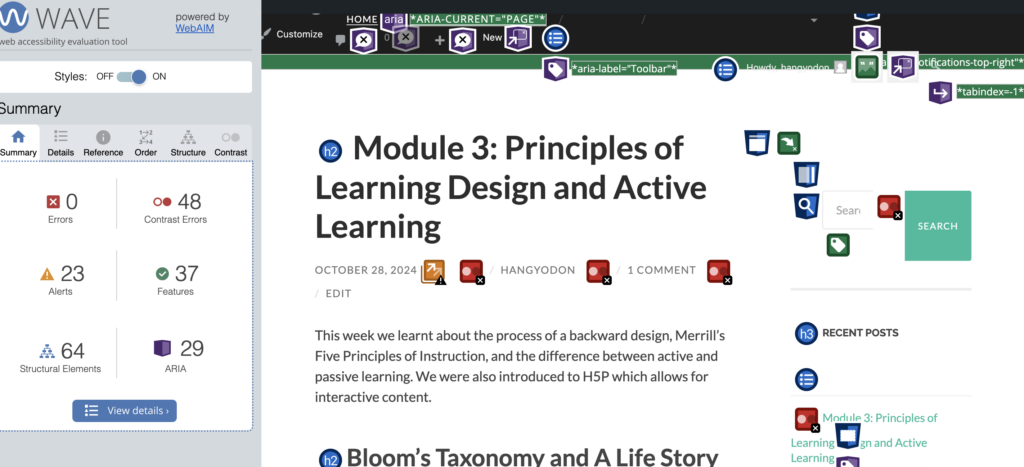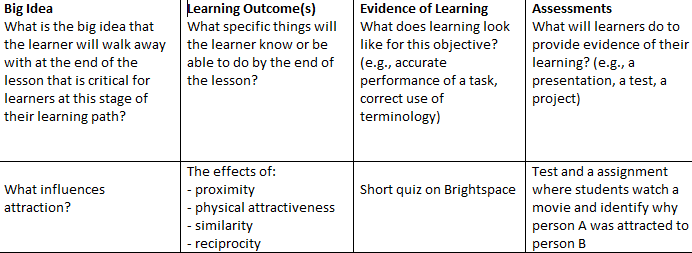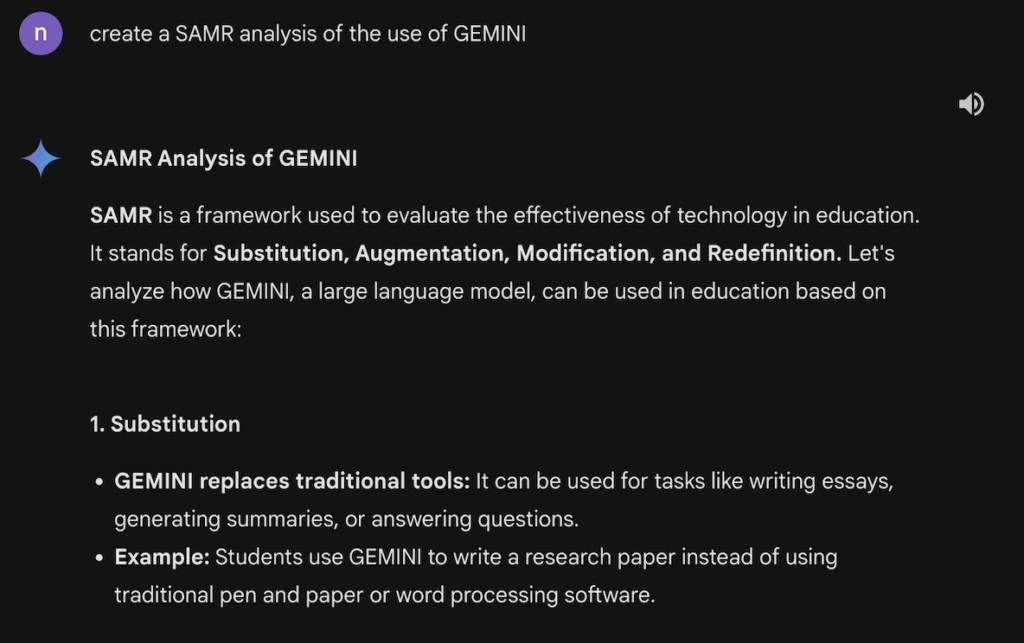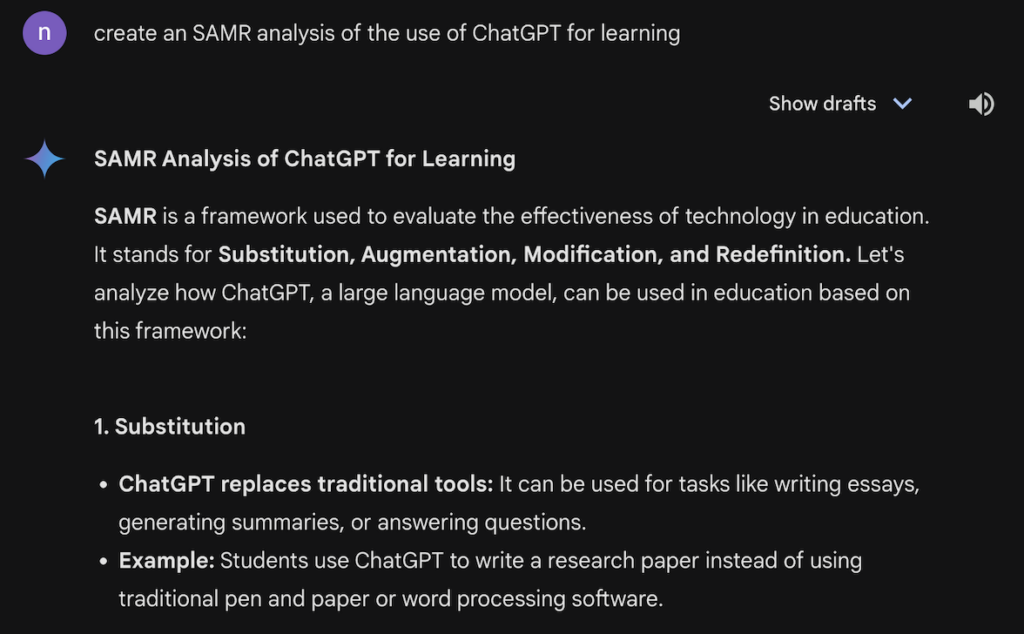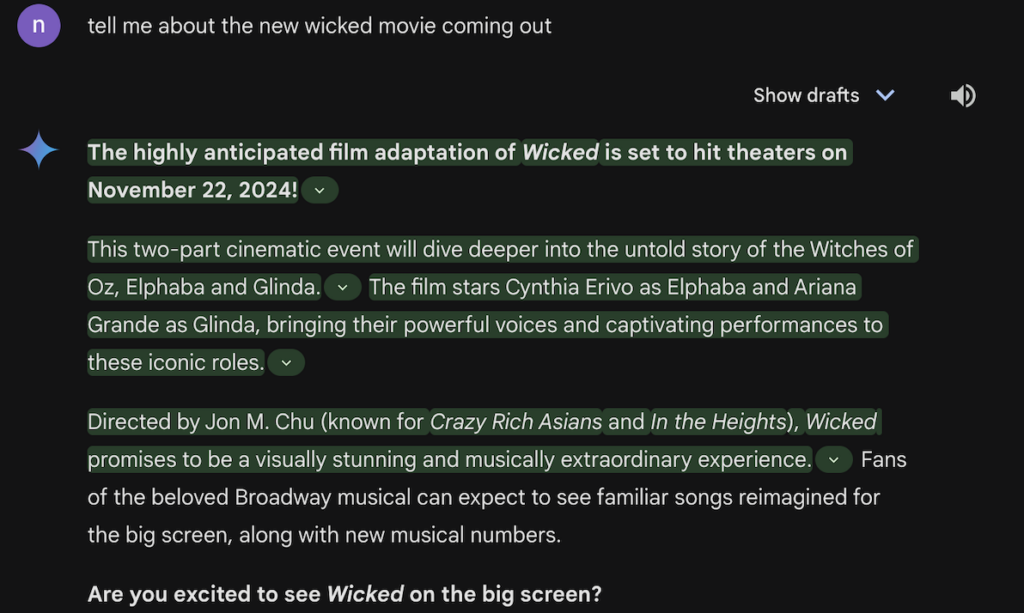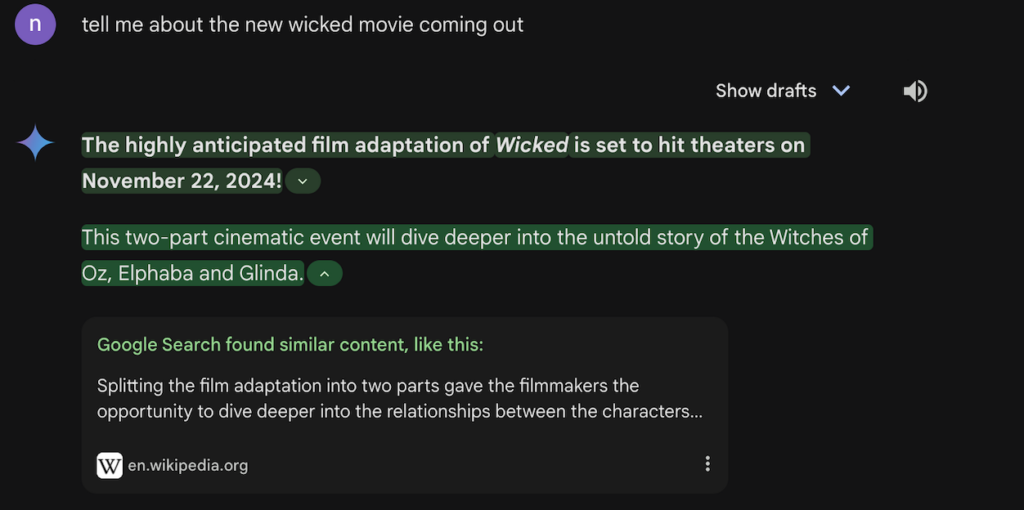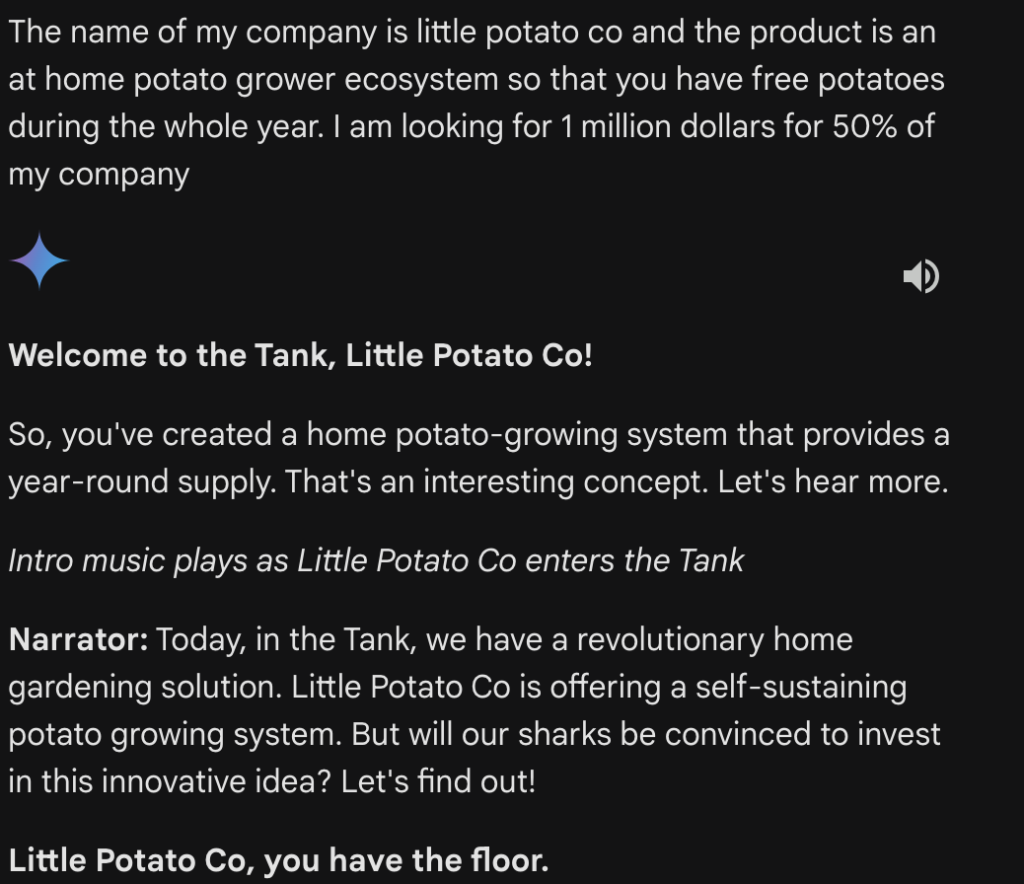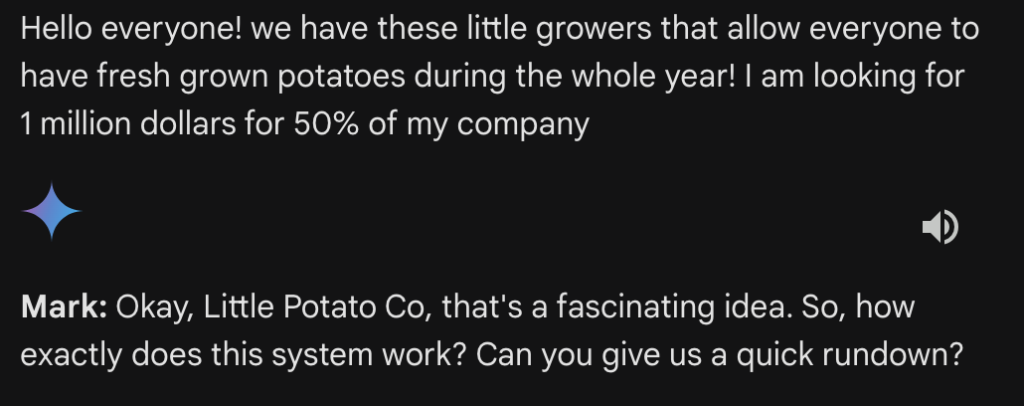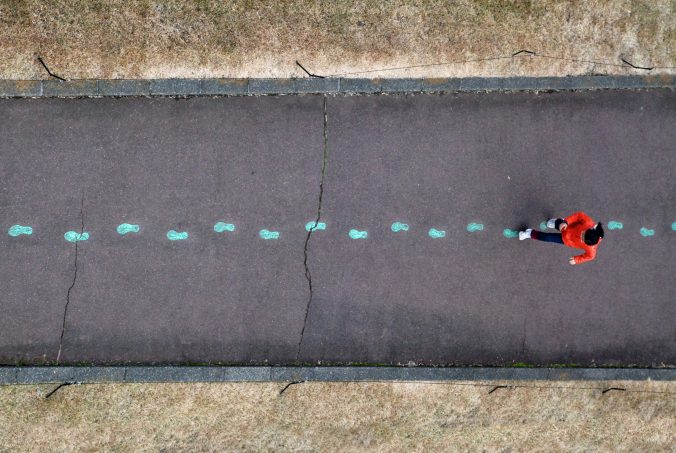For this unit, we learnt about ways to create effective story telling and played with video creation and Twine.
Impactful Storytelling
Stories that I find the most impactful are the ones that make me think, cry, and ones that I can relate to. Some of my favourite stories are sad like my favourite K drama, “Hi, Bye Mama.” It is a Korean drama about a mom who dies and comes back as a ghost and she has to see her life play out without her physical presence. She gets a chance to come back to life but for a limited time and has to figure out where and how does she fit back into life she once had.
This K drama really focuses on paternal love and that, for me, will always make me cry. What makes this so moving for me is the fact that I see the struggles of being a parent and it makes me empathize my parents, since we didn’t grow up with a lot of money and they struggled to make it as immigrants. The visualization and the amount of emotion placed into this K drama made it impactful for me. My parents don’t show a lot of emotion so, when I see parents on TV cry and feel emotion, it makes me think about my parents.
All this to say, I find the most impactful stories, for me, are the ones that make me feel sadness. Growing up in an Asian household, the feeling of sadness is kind of taboo and you’re left to deal with your own emotions. So, when I see stories where the characters deal with sadness, I learn how to deal with something that I was never taught.
Twine Experience
Twine was hard to figure out without any guidance since it didn’t feel super intuitive. It kind of felt like what I thought coding would be like especially with creating connections using [[ ]]. I do like the idea of Twine, with the non linear story telling. It is fun to think in many ways how a story can play out. My head has been in a CSC space for a while so when I saw this, it reminded me of something called a binary search tree. The ideas aren’t the same but the structures are (literally) 😀
Twine forces users to think about the “other side of the story.” This kind of idea really reminded me of the movie “Everywhere Everything All At Once” starring Michelle Yeoh. The idea of the movie is about alternate universes and Twine kinda forces users to think about other story lines. Below I made a branched narrative for us stressed students!


if you picked “Yes, I am very stressed”

if you picked “yes! I would love to know please!”

if you picked “no its ok D: stress keeps me going”

if you picked “No, I am not stressed” from the starting point of the story

if you picked “not its ok! I de-stressed enough”

if you picked “sure! I have nothing to do anyways”

Screencasting vs. Video Capture
I thought this part of the module was so funny since I had dreams of being a YouTuber around 10 years ago. I feel quite comfortable in front of a camera and doing video related things such as editing and music cutting. As stated during the module with screencasting, I am quite comfortable with using tools like iMovie to edit since I use to do “vlogs” (video blogs) for the trips I would take. I find filming and editing the easiest since I have the most experience with it.
Something I am *not* good at is voice overs. So, I took this video as another way of improving a skill I am not super great at. I made a script before hand and I actually did the voice over before editing the video since I had a lot more video footage. I thought it was easier to align the video to the voice over compared to vice versa. So, when compared to screencasting, I found editing videos easier since I got to work backwards. Trying to align a pre-filmed and pre-edited video to a voice over was definitely harder for me. With voice overs, the hardest part was just remembering how I want some things said. It actually took me 40 tries to get the perfect voice over! Editing, however, took me around 30 mins and I like the edited video more than the voice over D:
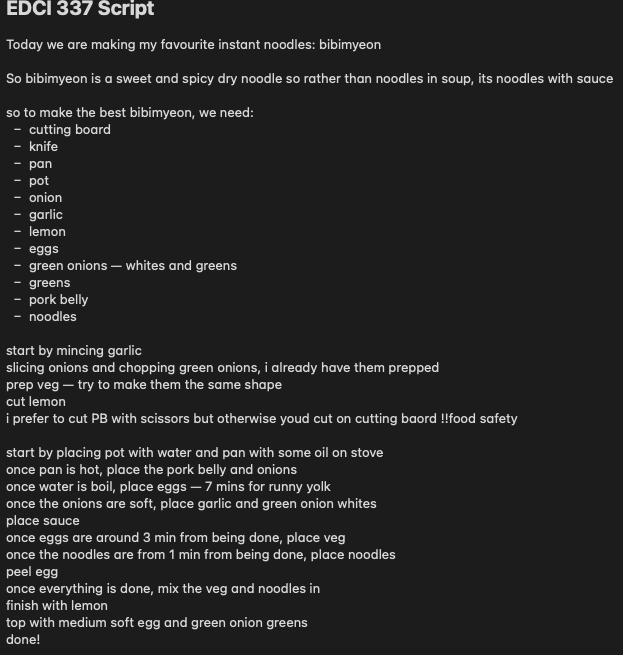
Since I knew this recipe by heart, I didn’t find the storyboard *as* useful as the script for the voice over. Since I have been consuming so much short form content, I decided to make this more like a TikTok video with the way its edited and the voiceover.
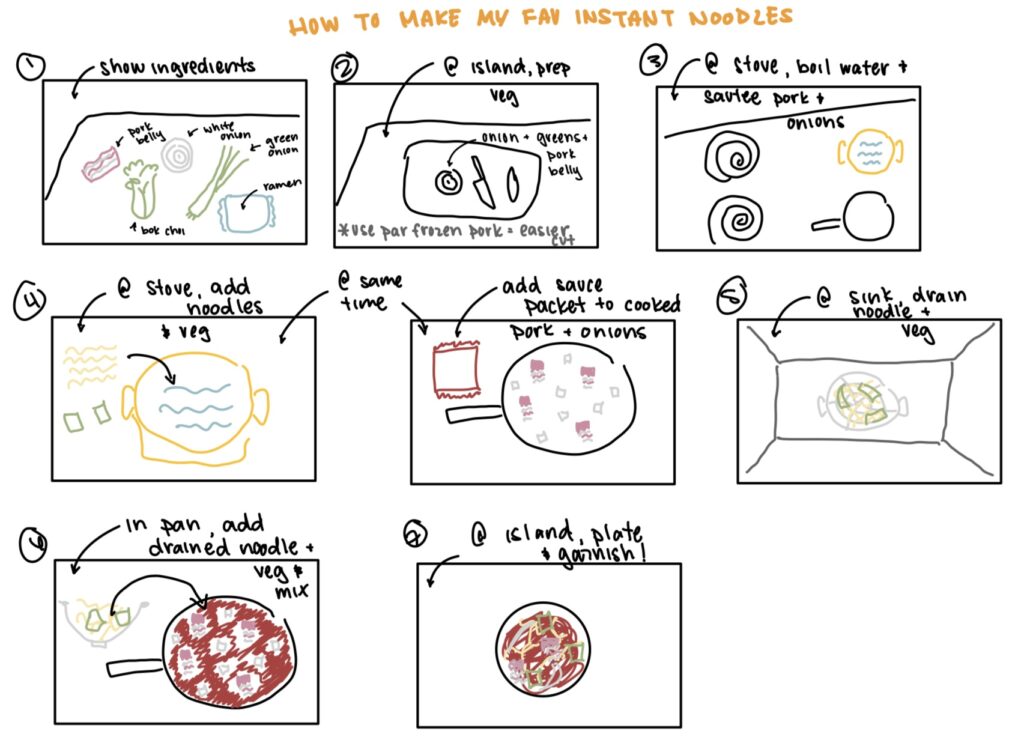
While I don’t have plans on seriously becoming a YouTuber, maybe if I choose this path as a career in an alternate universe, I’d want a better camera. A good filming camera is something I’ve been wanting for a while but, again, I am not doing a career related to videography, so, it’s not worth investing a lot of money into a nice camera. But, in a dream world, I would 10/10 get a nicer camera for next time.
Thank you for letting me live out my YouTuber dreams even for one video haha.
For my video, I decided to make my favourite instant noodles. Firstly, I think these noodles are *criminally* underrated. They have been my favourite instant noodles since I first had them (which is over 10 years ago) and I have never heard anyone else talk about them other than BTS’ RM. He actually went on V Live (a platform where Korean idols are able to go on live and connect with fans) once to complain about the cup size. As a result, the company increased the size of the instant noodles by 1.2x. Actually, while doing research for this small tangent, I found out all BTS members enjoy this instant noodle and have been seen eating it in many other V Lives. Here’s the link to see more about this:
Secondly, I decided to do a cooking video since I really didn’t know what else to do. I mean there are lots of videos I would like to film, but since its mid-November and I am at a all time high stress level, I thought to myself, there’s nothing better than instant noodles right now. If I wasn’t so stress, I would’ve done a video about spatchcocking chicken. Spatchcocking is the technique of removing the spine of a chicken (or any other poultry bird) and flattening the bird so that, when roasting, it creates an even and quick roast. I tried it recently for Canadian Thanksgiving and it created such great results. I’m actually hosting American Thanksgiving so, I will most likely be doing the technique again. Since this module is due before American Thanksgiving, I decided to scrap the idea. However, if I ever become a YouTuber and create this video idea, I will be sure to share it with everyone haha.
I had lots of fun creating, editing, and eating my instant noodles!
Here’s the link to my video:
Link to my comment:
I also agree with your Twine comment! The cookbook for Twine definitely feels outdated. It’s funny because we have been discussion potentially teaching you how to code and some languages actually have manuals and I hate them too.
